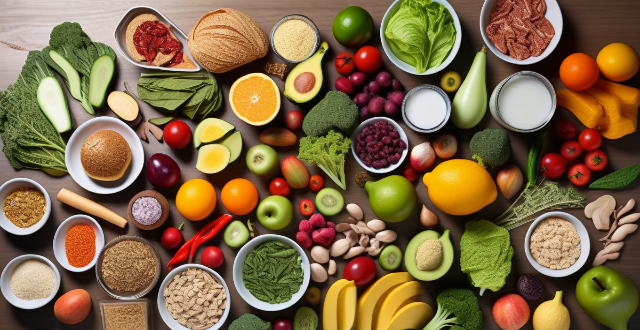The topic of nutrition and dieting in weight loss circles is approached with a focus on understanding the basic principles of healthy eating, emphasizing whole foods, portion control, mindful eating, hydration, regular meal timing, planning ahead, flexibility, and balance. This includes consuming fewer calories than burned, learning about macronutrients and micronutrients, prioritizing fruits, vegetables, lean proteins, and whole grains, using visual cues and measuring tools for portion control, slowing down while eating and minimizing distractions, aiming for adequate water intake and avoiding sugary drinks, not skipping breakfast and eating every 3-4 hours, preparing meals in advance and making a grocery list, allowing occasional indulgences and adapting dietary guidelines to personal preferences and lifestyle for long-term sustainability.

Approaching Nutrition and Dieting in Weight Loss Circles
Understanding the Basics
In weight loss circles, the topic of nutrition and dieting is approached with a focus on understanding the basic principles of healthy eating. This includes:
- Calorie Intake: Recognizing the importance of consuming fewer calories than you burn to lose weight.
- Macronutrients: Learning about the roles of proteins, carbohydrates, and fats in a balanced diet.
- Micronutrients: Ensuring adequate intake of vitamins and minerals for overall health.
Emphasizing Whole Foods
Weight loss communities often advocate for a whole foods approach, which prioritizes:
- Fruits and Vegetables: Encouraging high consumption for fiber, vitamins, and minerals.
- Lean Proteins: Promoting sources like chicken, fish, beans, and tofu for satiety and muscle maintenance.
- Whole Grains: Choosing options like brown rice, quinoa, and whole wheat bread over refined grains.
Portion Control
Controlling portion sizes is crucial in weight loss, as it helps manage calorie intake without deprivation:
- Visual Cues: Using hands or standard objects (like a deck of cards) to estimate portions.
- Measuring Tools: Employing measuring cups and food scales for accuracy.
Mindful Eating
Being present while eating is emphasized to avoid overeating:
- Slow Down: Chewing thoroughly and savoring each bite.
- No Distractions: Minimizing distractions like TV or phone use during meals.
Hydration
Staying properly hydrated is essential for overall health and can aid in weight loss:
- Water Intake: Aiming for 6-8 glasses per day.
- Avoiding Sugary Drinks: Limiting beverages high in sugar or calories.
Regular Meal Timing
Consistent meal times can regulate metabolism and reduce hunger pangs:
- Breakfast: Not skipping breakfast to jumpstart the day's metabolism.
- Regular Intervals: Eating every 3-4 hours to maintain energy levels.
Planning Ahead
Preparation is key to success in weight loss:
- Meal Prep: Preparing meals in advance to avoid unhealthy choices when hungry.
- Grocery Shopping: Making a list and sticking to it to avoid impulse buys.
Flexibility and Balance
Allowing for flexibility within a structured plan:
- Cheat Meals: Allotting occasional indulgences to satisfy cravings and maintain motivation.
- Lifestyle Fit: Adapting dietary guidelines to personal preferences and lifestyle for long-term sustainability.
In conclusion, weight loss circles approach nutrition and dieting holistically, focusing on education, mindfulness, and balance to achieve healthy and sustainable weight loss goals.